Back in July I started chatting with artist Joanna Goddard via email about her latest works ‘The Kubb series’. Still unable to meet in person because of that virus you may have heard about, and because of a few major life events on both sides, including, sadly, a family bereavement, it has taken us quite a while to get to a point where we can write this blog. But! we got there eventually, and I am excited to share with you an inside look at Jo’s work and inspirations for this, the 6th instalment of our featured artists interviews here on the Sweet Blog.
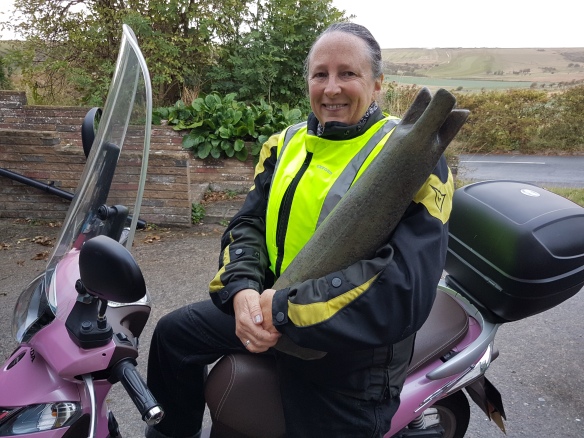
Predominantly working with Ceramics, specifically paperclay, and inspired by artists such as Grayson Perry and Louise Bourgeois, as well as author Rosette Gault and poet Christina Rossetti. Jo uses bold colour pallets, suggestive forms and an interest in exploring the juxtapositions between materials and the viewers sensory experience to create sculpture which is both stimulating and surreal.
If you have been following Sweet ‘Art for a while you may also recognise Jo from a previous Sweet ‘Art exhibition back in 2016 called Hand Maid in which she showed her piece ‘Swarm Of Desire, The Nymphs Headrest’. Inspired by ‘L’après-midi d’un faune’ a poem by Stéphane Mallarmé which describes the erotic desires of a faun after he encounters several nymphs in a forest.
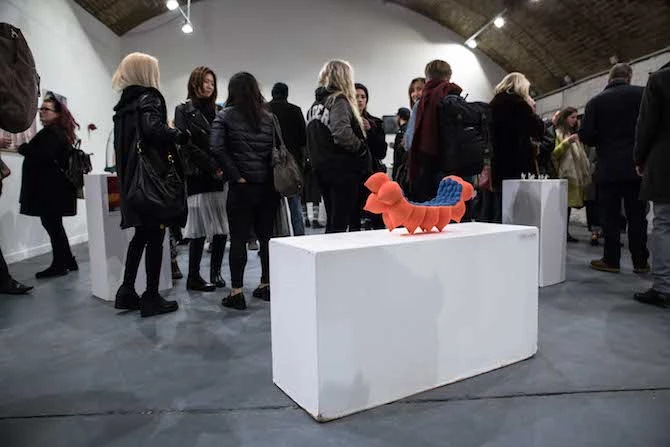
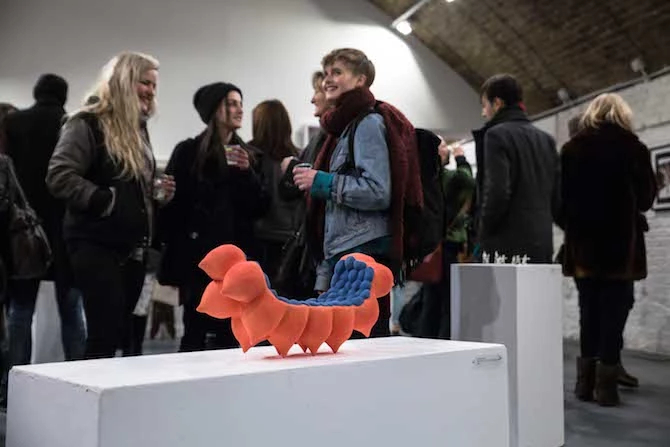
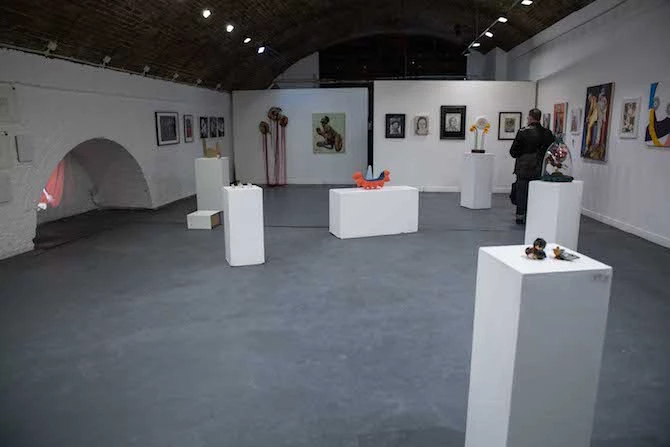
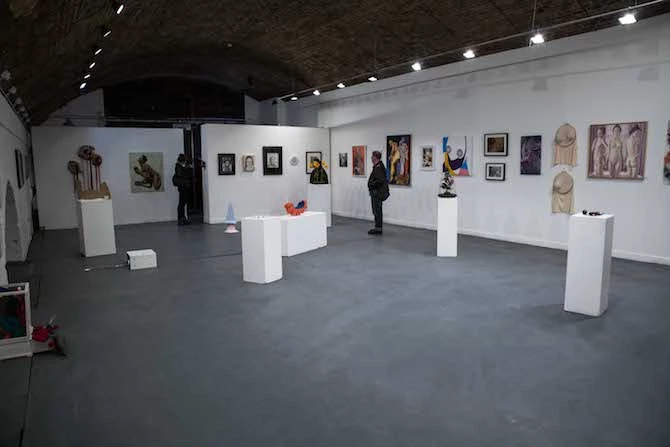
Hand Maid was a little bit before my time working with Sweet ‘Art, so although I was aware of the exhibition I wasn’t very familiar with the works or the artists involved. You can imagine my delight when I found these photos of Jo’s works in the show, with that bright shock of orange and blue sitting proudly right in the centre. The energy and feeling that comes from Jo’s work, even just in photos, is so much fun and so vibrant that it captures all your attention, draws you in and makes you want to ask for more. So I started by asking Jo about her background. Where do these ideas come from? Why ceramics? And what’s next?
Jo’s love affair with ceramics started back in the late 80’s/early 90’s while she was studying for her foundation in Hastings, speaking on this early inspiration Jo says…
“I started using clay after my Foundation at Hastings in 1989, we had an amazing teacher called Tony Bennett who created the most incredible ceramic works, they were really amazing. He exhibited in Garth Clarke gallery in New York, and of course we were all v. impressed. It made me realise what could be done with ceramics, that it could be a prestigious material despite its basic origins. I also followed Grayson Perry’s work at this time.”
“I always admired his [Grayson Perry’s] work, ever since I saw him in a magazine and realised that it was possible to put pictures on pots. That literally fired me up and I was into monochrome for many years – although there were many times I could have used more colour, I was strangely scared of it.”
She carried this motivation and her ideas over when she started studying 3D Design, Ceramics at Surry Institute for Art and Design, and later, while working with a mould making studio in London to get larger works made and fired. Jo would even transport works to London from Brighton by train as local studios were not keen on sharing firings!
Eventually Jo received some grant money which enabled her to buy her own kiln, this in turn meant that she could create more ambitious, larger scale sculpture and for the first time, start trialling colour in her works.
“Once I got some grants and a kiln, I was able to start experimenting, and finally colour came along! I did many group shows and even took my work to Holland to exhibit. I had loads of outdoor shows, and really enjoyed it. Slowly my work got larger and brighter – the Population series was the heaviest and I realised that I needed to find a new material. I corresponded with Rosette Gault whose investigations into Paperclay were just beginning. She inspired me to use it – and it gave me so much freedom, work could be made/stopped/restarted and it was really liberating. I really loved the Breakfast in Fur, the cup by Méret Oppenheim – that confusion between touch and texture – really excited me. Inspired by this many of my pieces looked like they were made of foam”
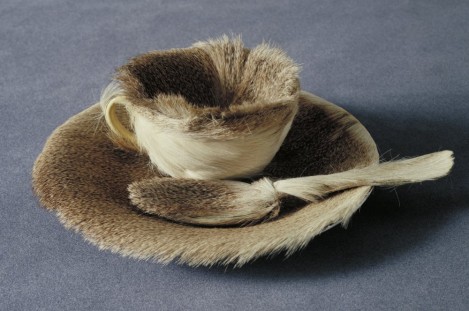
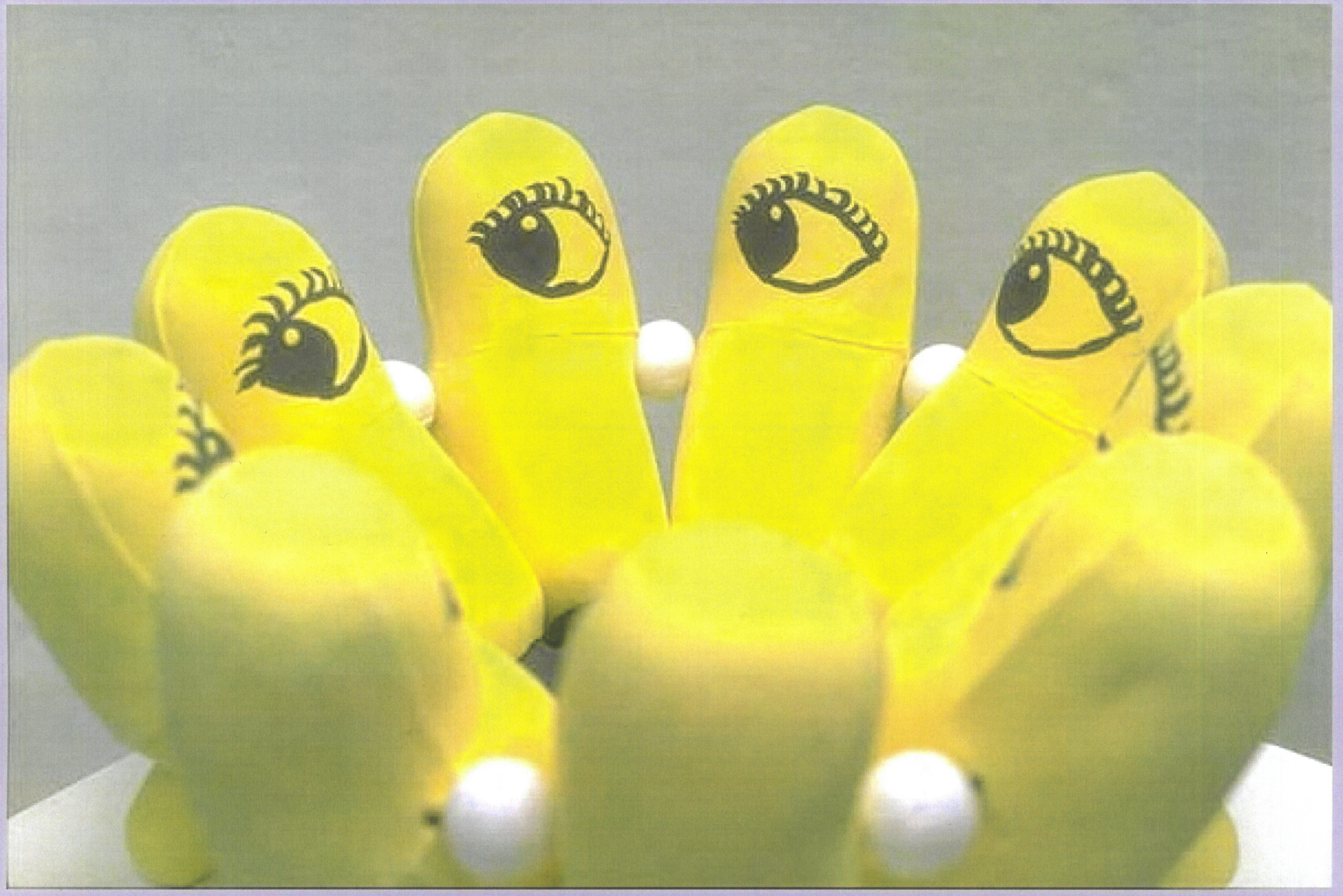
Jo’s work morphed yet again in 2006 when she became a mother. From a mix of sleep deprivation, working around her baby’s needs and drawing inspiration from the poetry of Christina Rosetti and The Dolls of Hans Bellmer, the Nymphs Headrests were born, as well as a series of other works in orange.
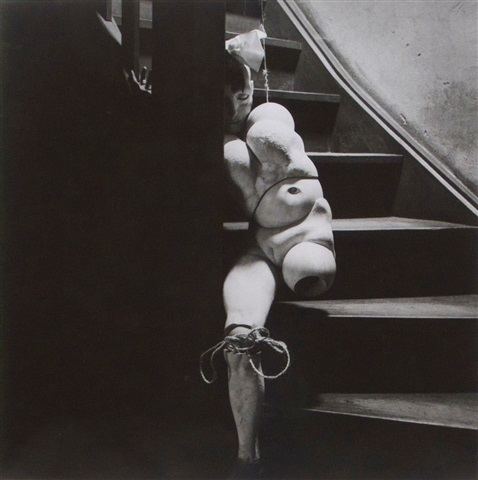
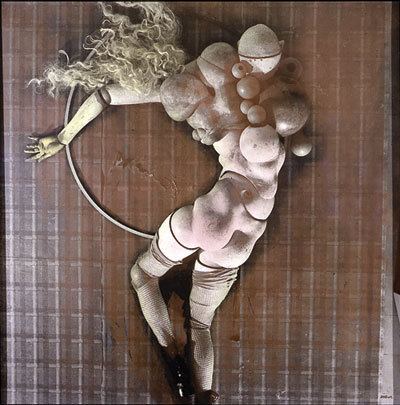

“With motherhood arriving in 2006 my work did change – any mother will know that enough sleep & successful breastfeeding is a holy grail concocted by the devil!! Out of this time I made the Nymphs Headrests and a set of other orange works. The poetry of Christina Rosetti and dolls of Hans Bellmer were big inspirations – no coincidence that I visited the Bellmer exhibit at the Whitechapel with my baby – some raised eyebrows there but he slept through it all! The first 10 years of motherhood were good for my work – but as the kids got into the pre-teens, I found my work getting darker – blue came in, along with metal tones and harder surfaces.”
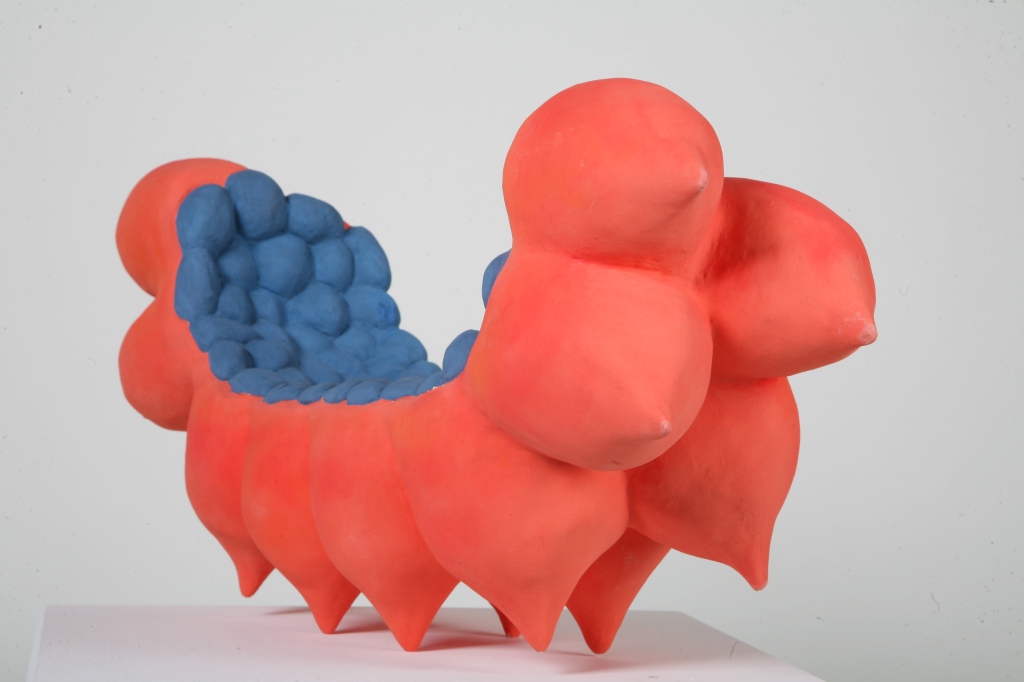
Which I guess leads us to now! Quite recently Jo has been working on a new series of work; The Kubb Series. (A quick google of the term Kubb reveals that it is in fact a lawn game, similar to bowling or Horseshoes, which has its origins with the Vikings.) These works are much larger, supersized versions of ancient gaming pieces, “Something you can really get your hand on!”
When Jo showed me these works and explained what they were I got quite excited! I love anything linked to Viking history so I was keen to learn more. I asked Jo about her recent changes in inspiration and her move to a darker colour pallet, as well as her hopes for exhibiting in the future.
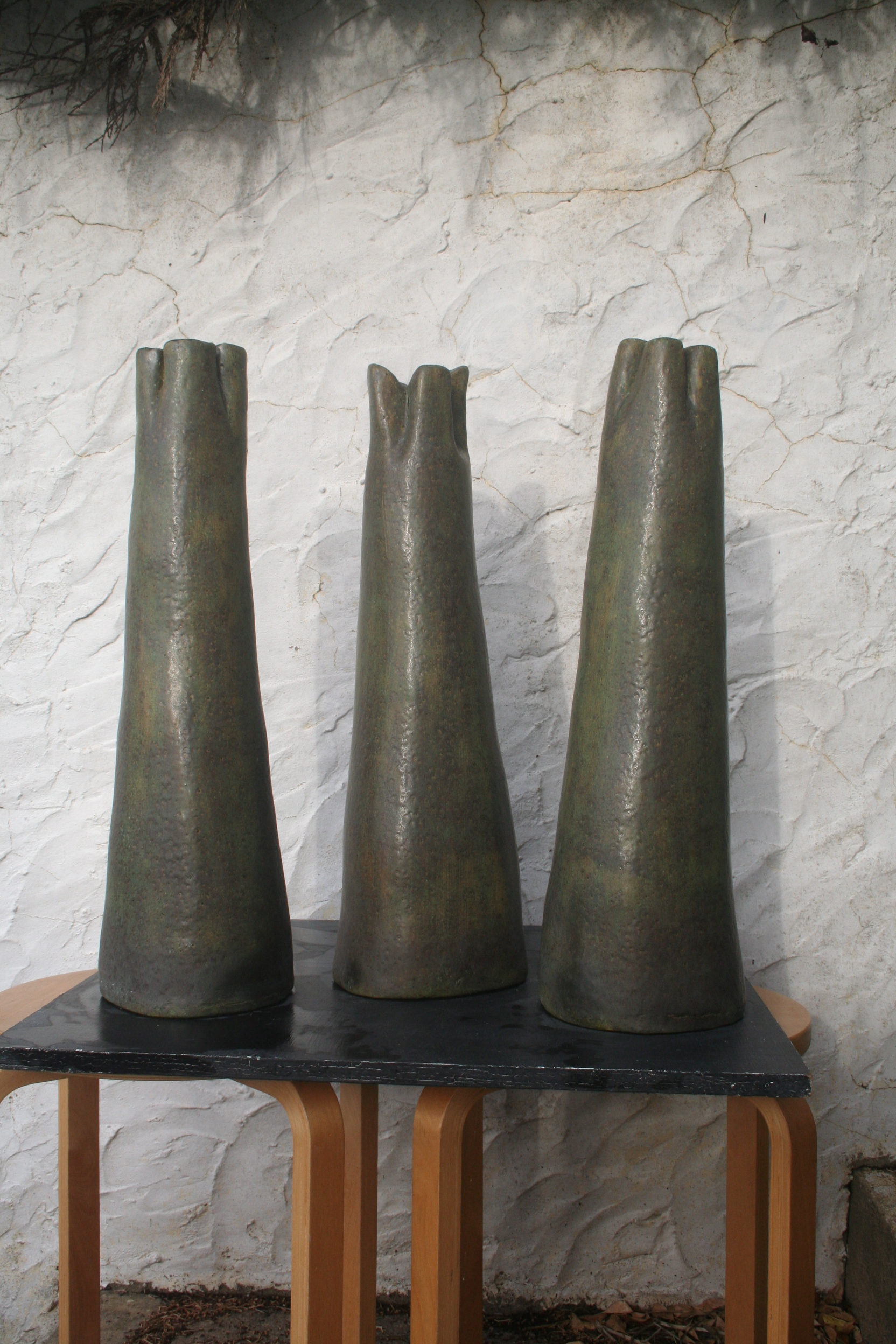
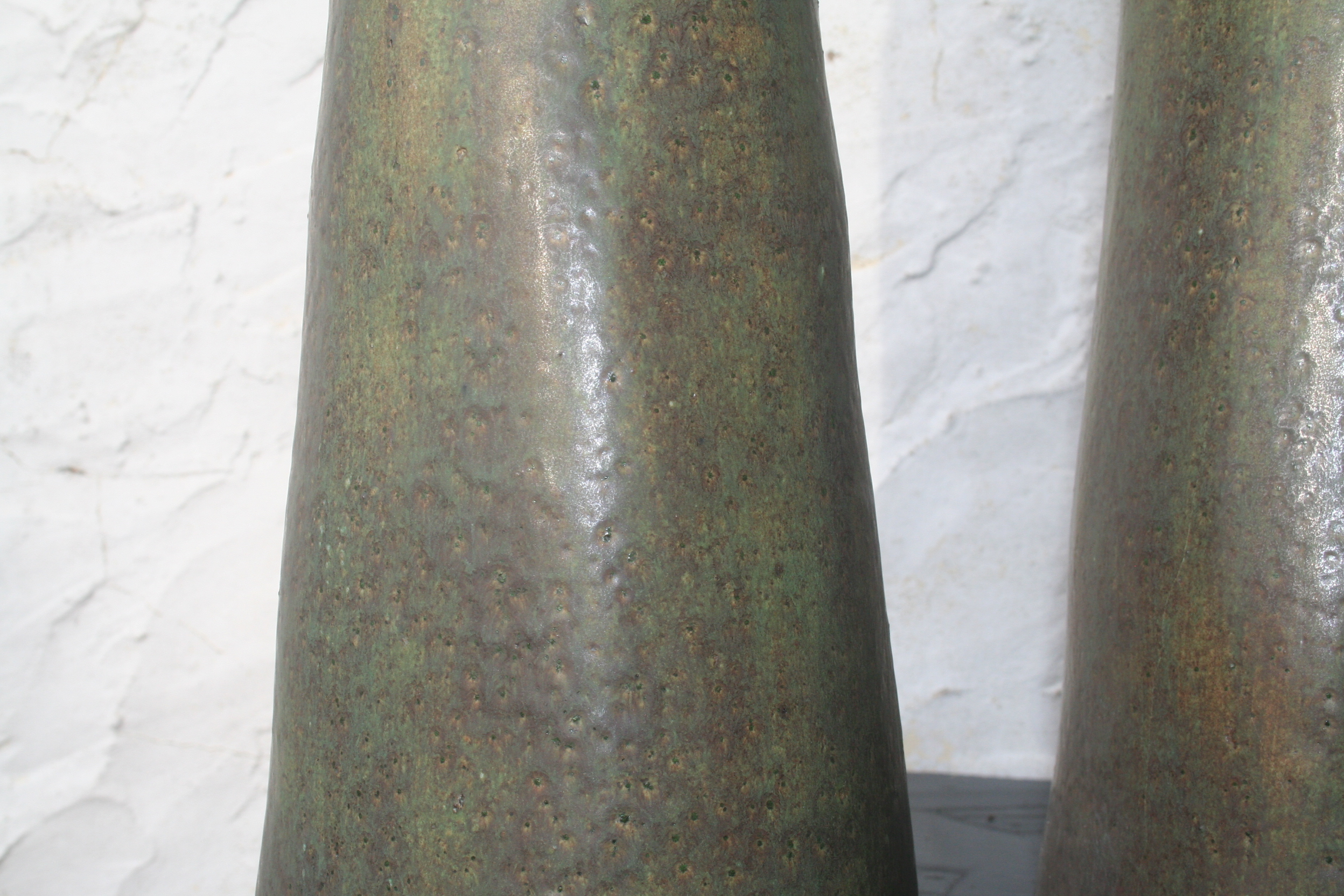
Q – At the very beginning of our chat you mentioned that with your most recent work you have had a change of inspiration, working with darker colours and tones, as well as changing the materials you work with to better fit around your commitments. Can you elaborate on that a little?
“For the past 10 years, I have been making different work, working with scale, proportions and deeper colours. This started when I read the poem Goblin Market by Christina Rossetti. I got excited about darkness again, a good darkness of velvet shadows and a deep blue twilight feeling. It’s also about the tactile and being inspired by things that people touch, like the Boli figures (from Mali) or viking games. I am excited by the intimacy of those original things that people handled. I also used to work in a castle and sometimes was allowed into the cellar archives to look into boxes of old skulls and pottery, memories of that came back to me. I have also been inspired by my late mother Sandra’s collection of folk songs. Growing up hearing her sing these dark and sometimes brutal storylines has given me much inspiration over the years.”
Q – It’s clear from the descriptions on your website that you have been inspired by all sorts of things over the years but have there been any subjects or themes which you find yourself coming back to often? or which seem to run through your work by themselves without intention?
“I have always enjoyed the juxtaposition of materials and sensory experiences. Mainly where you look at something and imagine it feels like one thing but in fact and when you actually touch it it feels like another.
The artwork which started this off for me was Méret Oppenheim’s cup called Object, I may have already mentioned it. It’s a very strange piece because the more you look at it the more it confuses your mind, I spent a long time looking at it in the Tate.
I also was very drawn to Jeff Koon’s Rabbit which hypnotised me in a gallery in LA. So for the ’90’s I was making brightly coloured ceramic work that looked like soft fabric toys or foam, to play with that type of sensory perception/confusion. There was also a sensual element at play, like in the Nymphs Headrests which I made while my children were infants. Motherhood definitely changed me!”
“I often end up making some quite phallic objects but I dont think of this while making them. Mind you I do fancy having my picture taken like this one of Louise Bourgeois with one of my works tucked under my arm!”
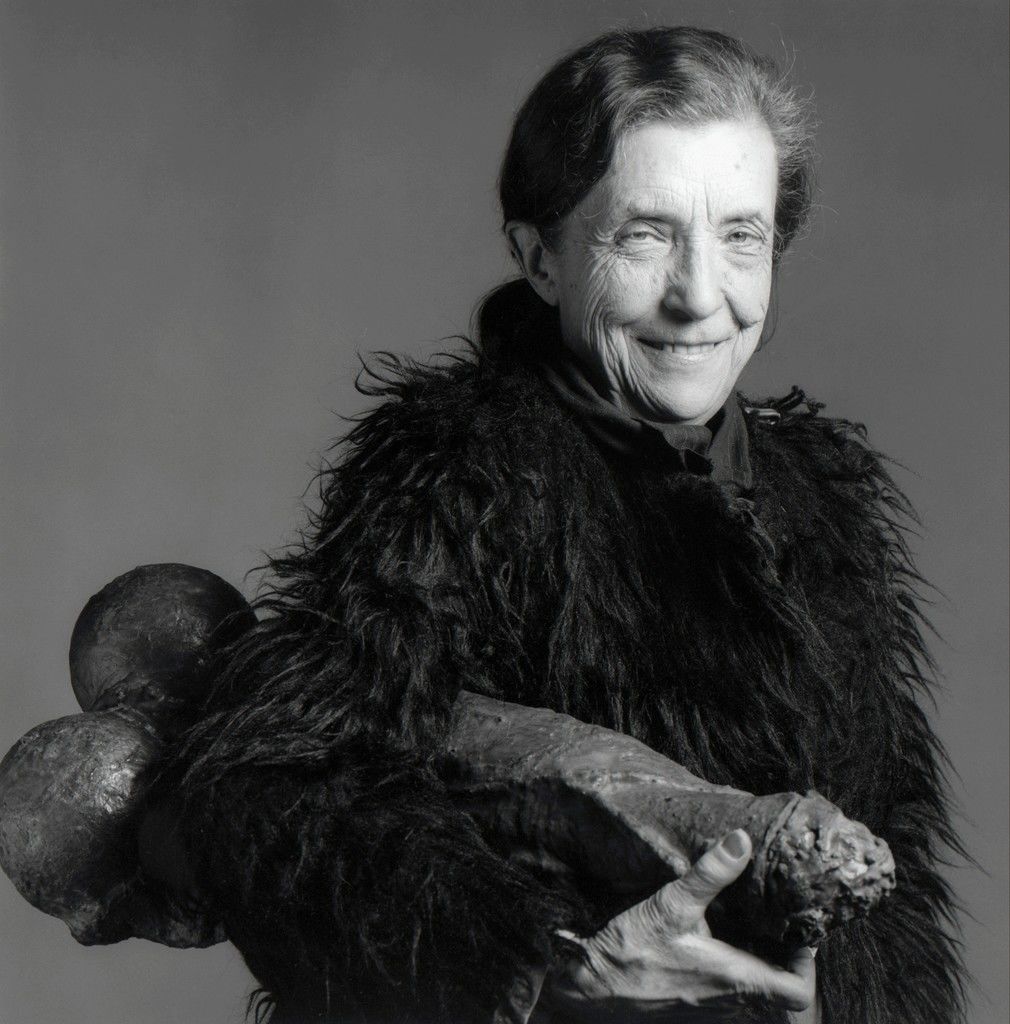
Q – Looking at the images you have sent of your most recent green works, they feel like very organic forms, almost like they created themselves. But I’m interested to know if you have an interest in or have been researching ancient monuments/structures or cultures? they remind me a lot of the upright stones at Stonehenge or the stones at Avebury, all be it on a smaller scale.
“On a visit to the British Museum I was looking at some Viking gaming pieces – small, bronze and worn by the passage of time and hands.
Studying them, I thought that they were like the most perfect of sculptures – if only they were larger….
Then on a family trip to Lindisfarne the exhibits there also drew me into the story of the Viking incursions into England, and how they would have carried these type of gaming pieces about their person.
The objects use – to bide their time when they weren’t rowing boats or fighting, made me realise how little of this side of their society I knew about. There was something very intense about the intimacy of the objects, and that excited me to make these three green works”
“Also As a child I visited Stonehenge and remember touching and laying on the stones, and I also, as a teenager I slept one night in West Kennet Long Barrow, Wiltshire. Being up close and personal with these ancient stones has definitely influenced me, I love the combination between something that looks monumental from a distance but still draws your touch. Modern monuments are always up on a plinth, but these older ones seem to grow from the earth and like a tree you just want to get your hands on it.
Q – Is this new work site specific? And how does the environment the work is placed in influence it? For example would you like one of these pieces installed on a certain hill because of the light interactions, or because of the way it would disrupt the landscape, maybe?
“I would love to exhibit in a forest again – I really like the way the light changes through the trees and that the view of the work changes as you move through the forest.”
Q – Going back to the materials you use, do they impact or manipulate the shape and texture of the piece at all?
“The clay I use is paperclay and it does make me create more solid work, in the way that I construct it all in sections over time. The joy of the paperclay is you can work for a bit, pause then resume, which works well around my kids, job, life. It also means I don’t have to rush. You can make fragile works but I have chosen not to, so the work is much more robust to handle and fire.”
Q – If these pieces were placed in the landscape what reactions do they have from people walking by? (or what reactions would you like them to have?)
“People are often saying that my work looks very pleasing in the landscape – the intimate (less than 60cm) size gives them an intimacy that draws people in – and the material, clay, always draws a comment that they are very “natural””
Q – Do you have any plans to exhibit them outside? And how do you think showing them in a more “traditional” white cube space would change the works and the way people interact with them? (for better or worse)
“I am currently approaching some outdoor venues / cafes and also rural business centres to see if they are interested. Its early days, with C-19 concerns holding things up, but I am keeping up my work on this idea.”
Q – Where do you want to take the work next? Do you have any ideas or plans for new sculptures?
“I am keen to continue working to 60cms, and beyond. I am dreaming of sleek monoliths, moonlit sculpture trails, creating a wooden dome and erecting it in a forest, to exhibit in. Family commitments are a constant draw on my focus but I will continue to make and show my work – who knows, I might sell some pieces if I’m lucky!”
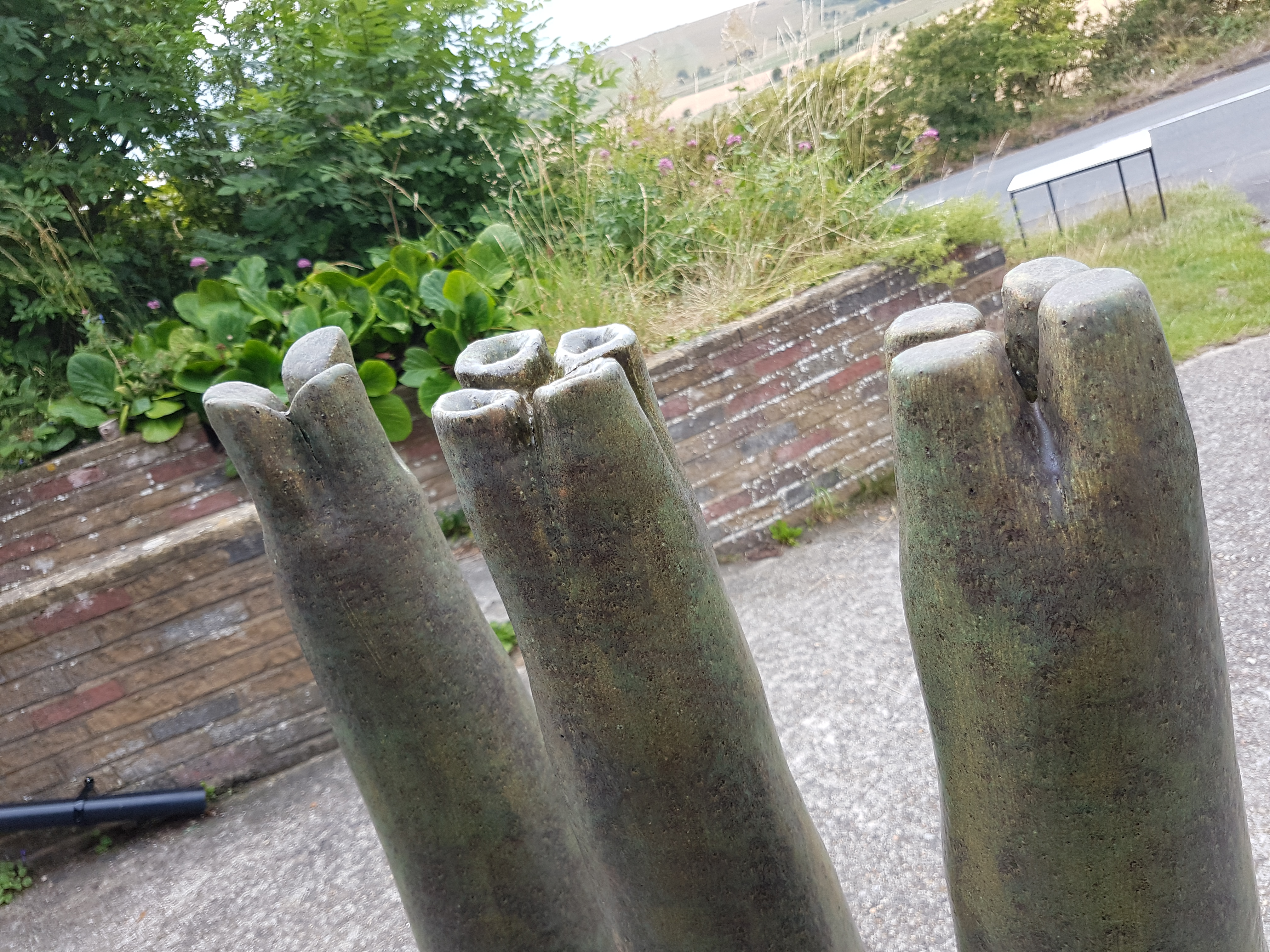
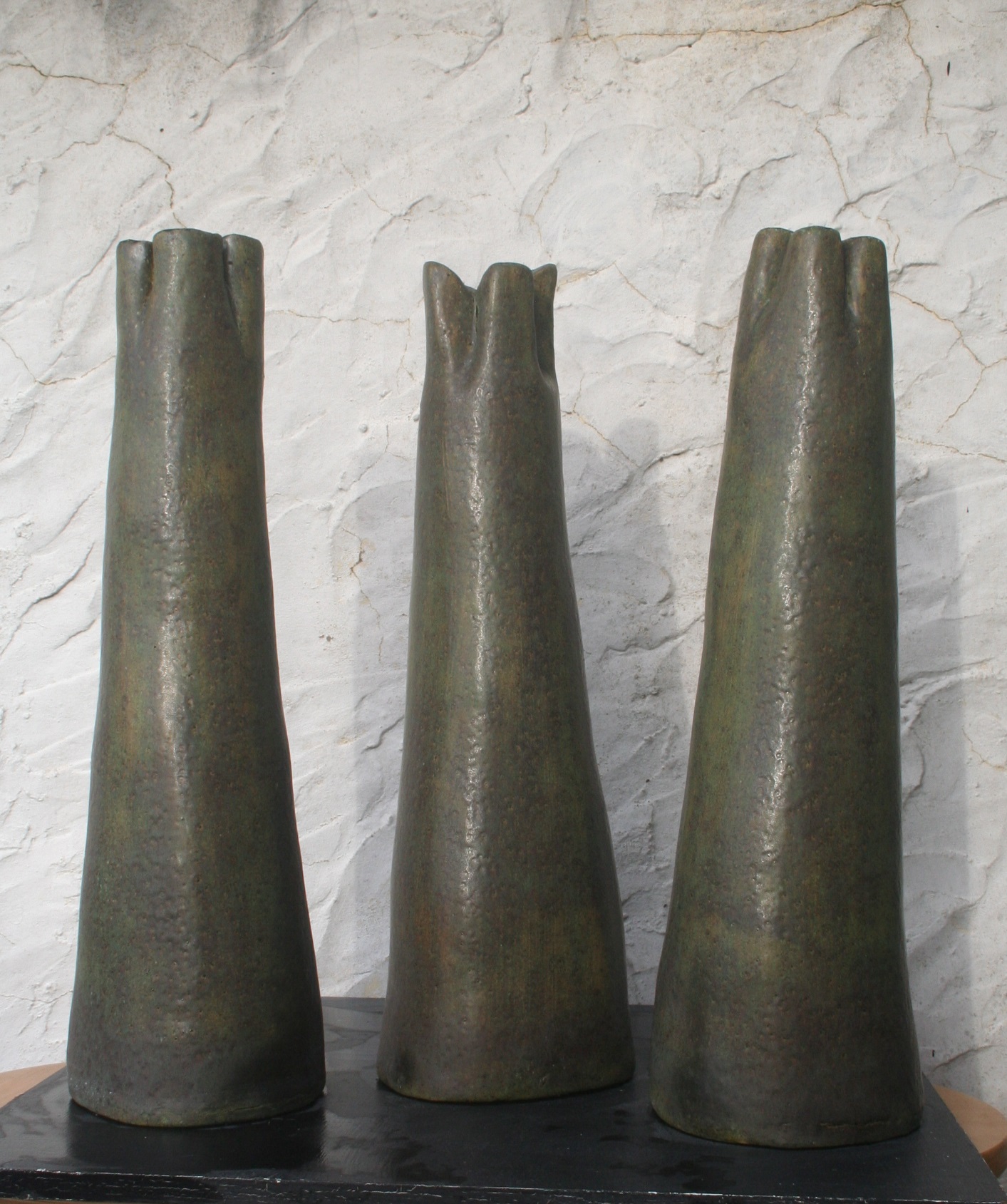
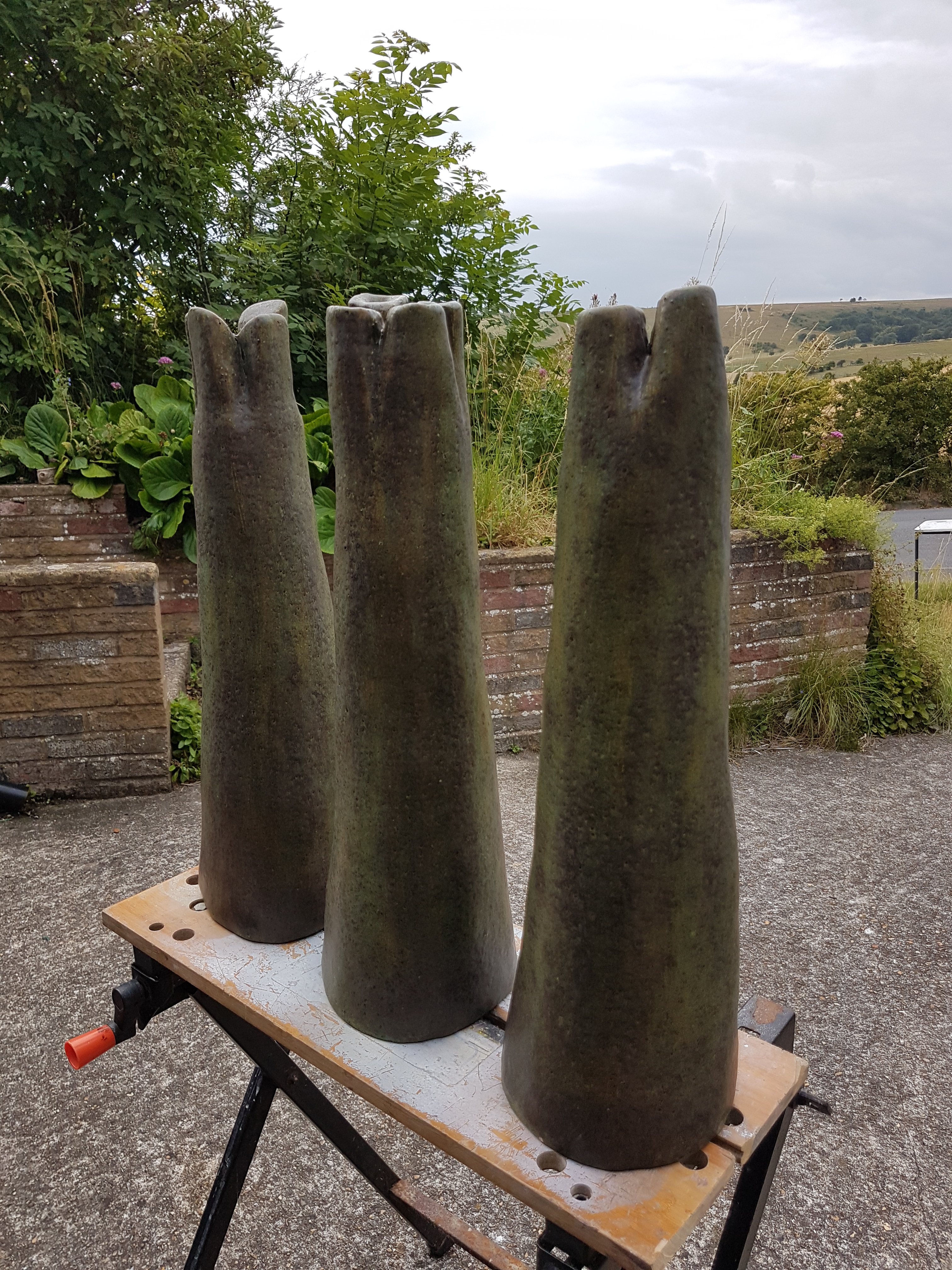
Like most artists Jo also has a few other creative projects on the go! And naturally I had to ask about these ventures and how they fit into her wider body of work…
Q – I remember you also mentioned that you have a few other side projects going on including prop making and sewing. Both of those things seem very different from your ceramic works! How do they fit into your creative bubble? I have been experimenting with sewing and embroidery myself during lockdown and have found it a really good way to relax and “zone out” from all that is going on in the world for a while. Is that similar for you?
“Sewing – specifically quilting, has drawn me as I have only a few decisions to make, then the rest is just work. It’s very different to making a sculpture. You can recut, revisit, resew. With clay there is a finite point, there is no unpicking. So, I found that by doing sewing in the much colder months, I could rest my clay/art making brain a bit. I use a 1930s manual and 60’s electric machine then I hand tie (sew the sides of the quilt together). This involves having a 6” frame in the front room for months, while I work on it every evening. Each triangle gets three stiches in the centre then I move through to the next triangle/space, it’s quite time consuming.
The prop making was done from around 1997 to 2006 for Vavavavoom! a burlesque event lead by my friend Stella Starr. It was really inspiring and great fun, as well as hard work. Again, it was different from making sculptures and great to work to a brief, we had a great understanding of the visual impression of the costumes and props and hope to showcase them again in the future.”
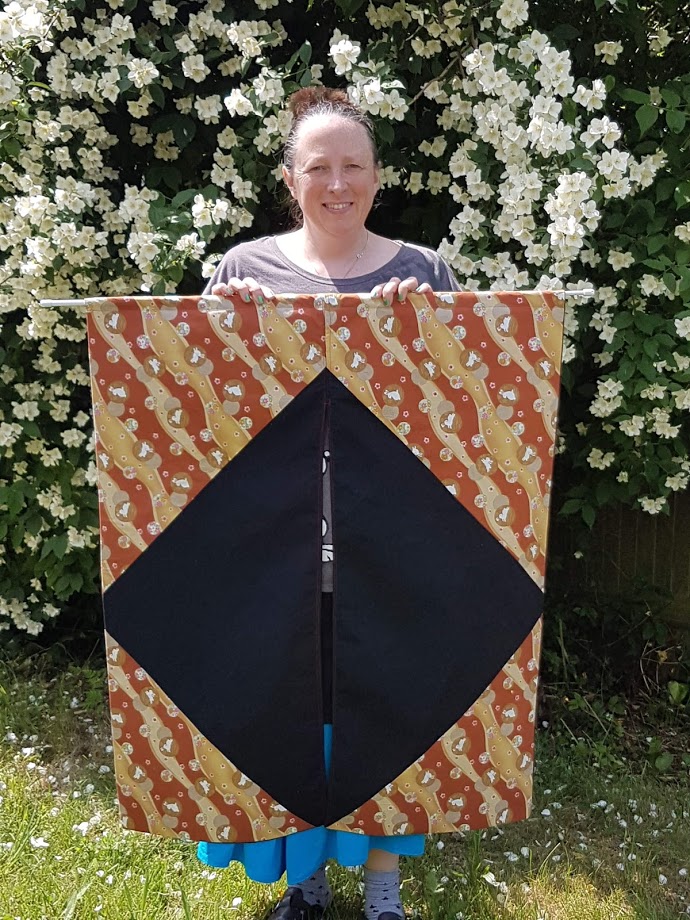
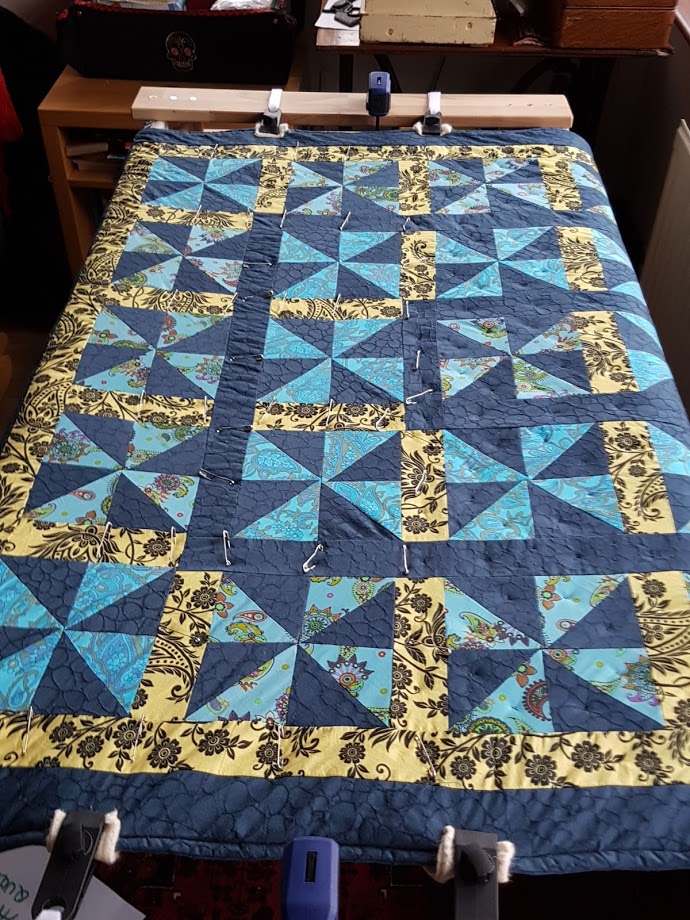
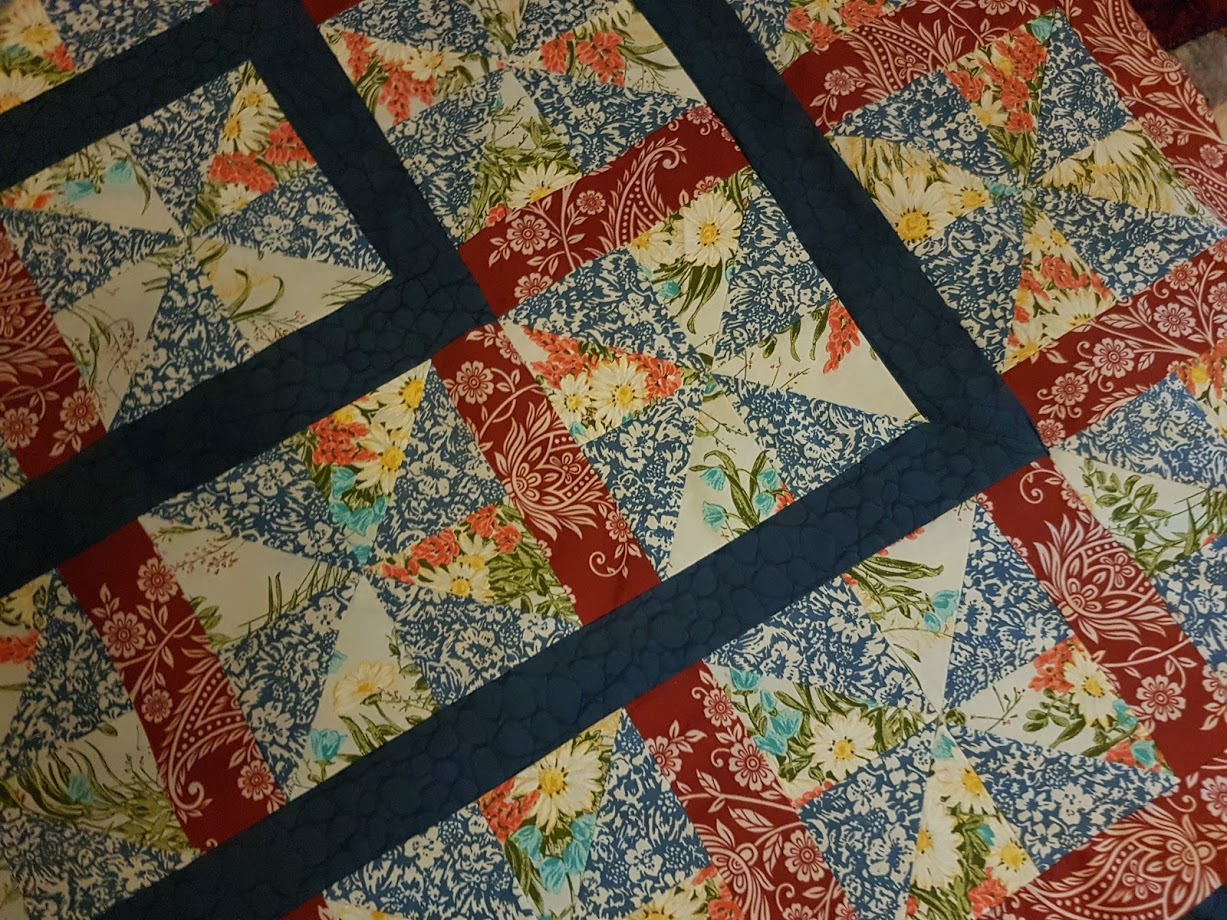
And Finally, I couldn’t finish this feature without mentioning Jo’s dad Lawrence, who sadly passed away during preparations for this blog.
Lawrence helped advise Jo with technical challenges, drove artworks to exhibitions and was a sounding board for her ideas, even if he was slightly bemused by what she was making!
He will be greatly missed.
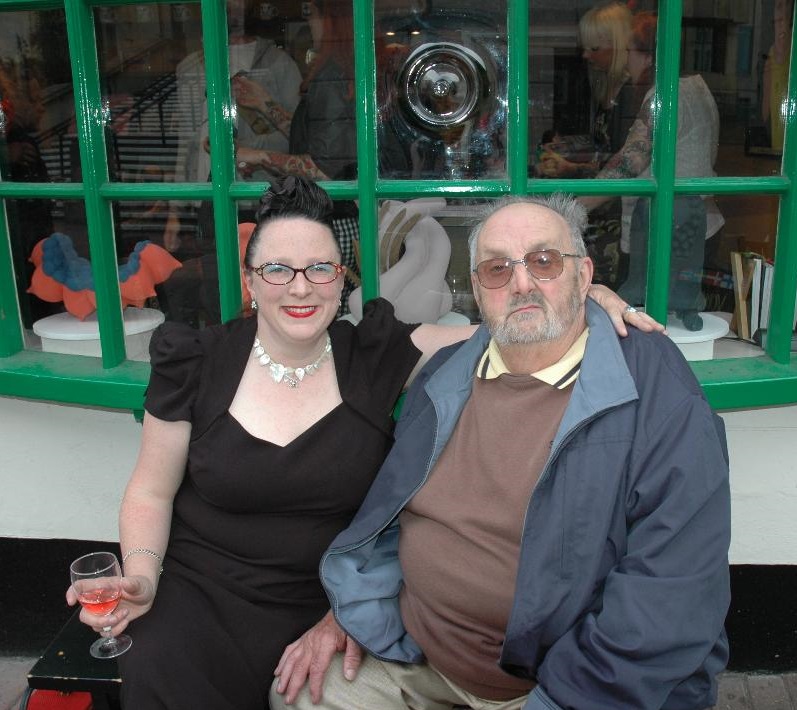
You can also visit Jo’s website and her Instagram for more!
